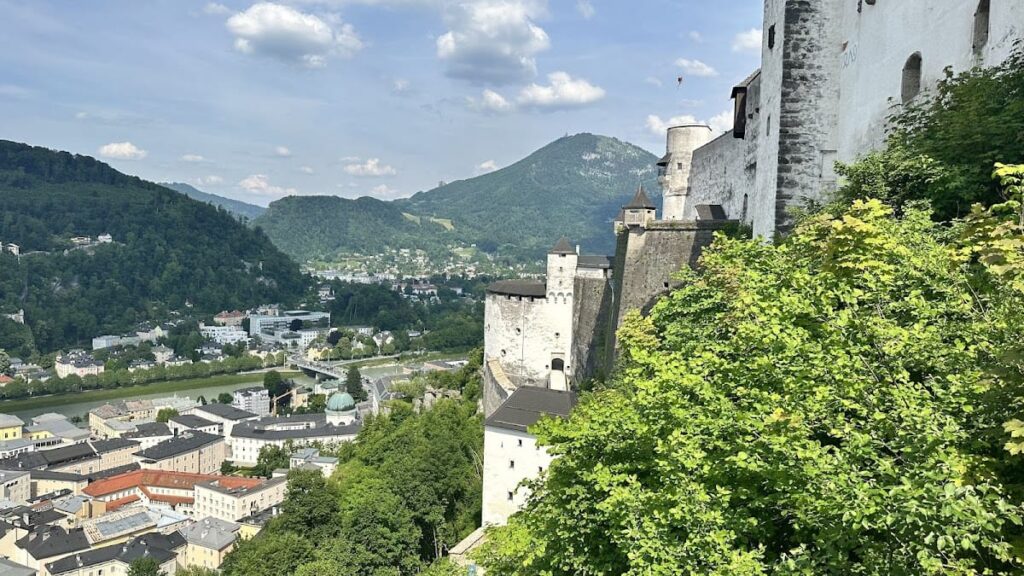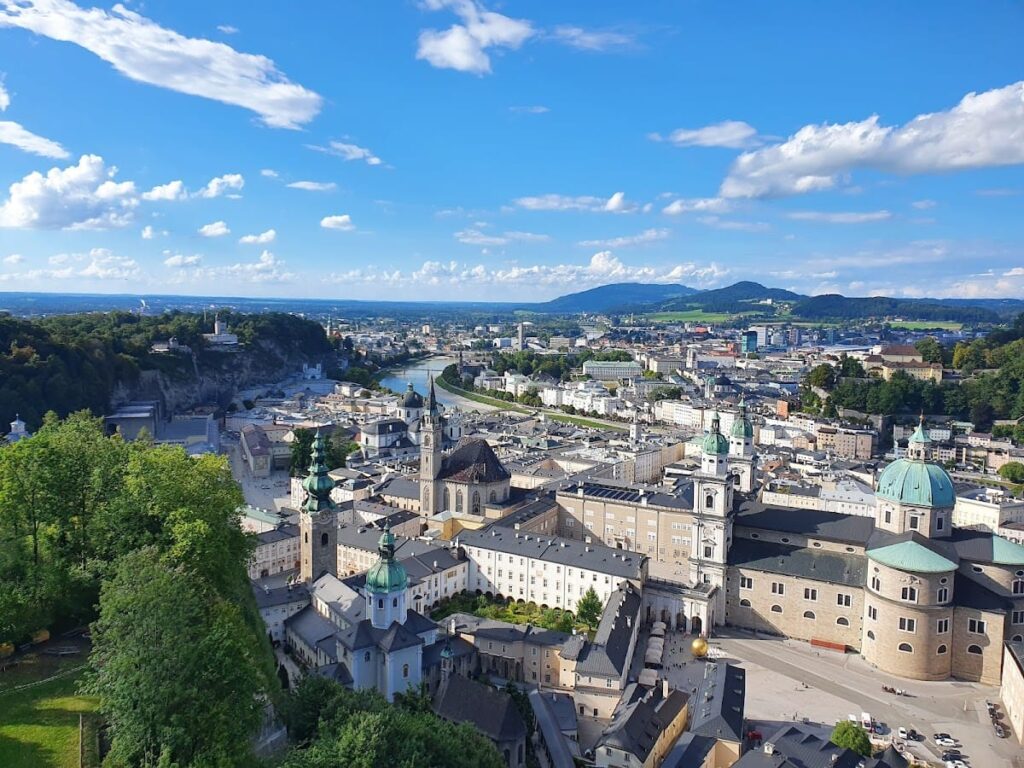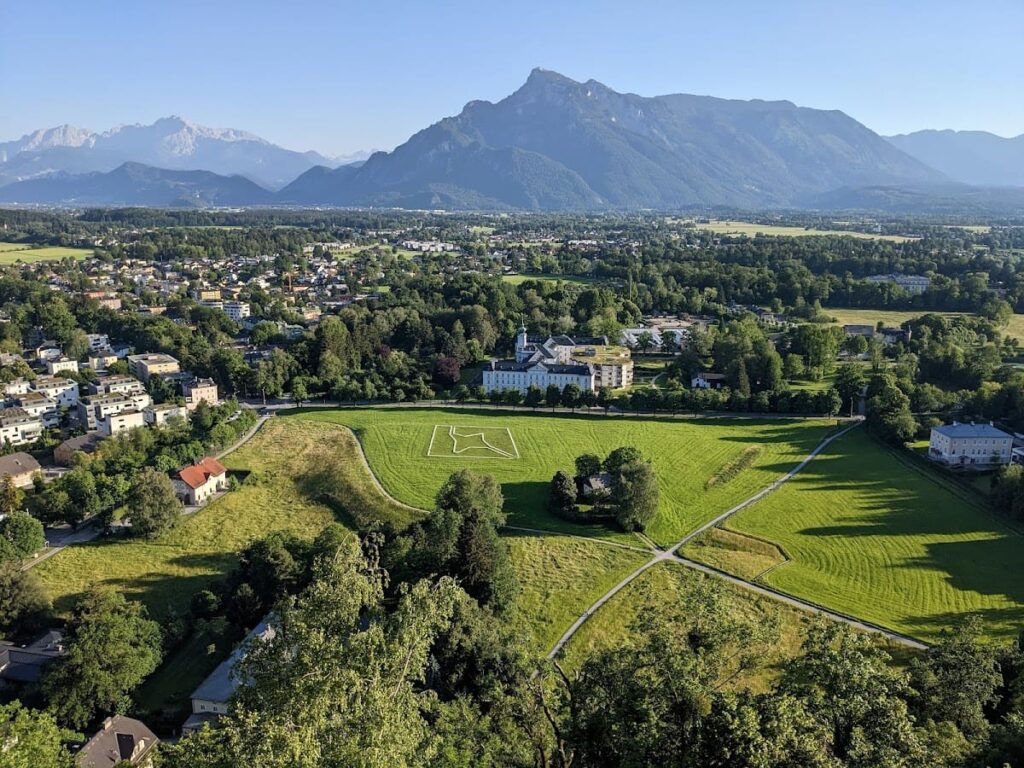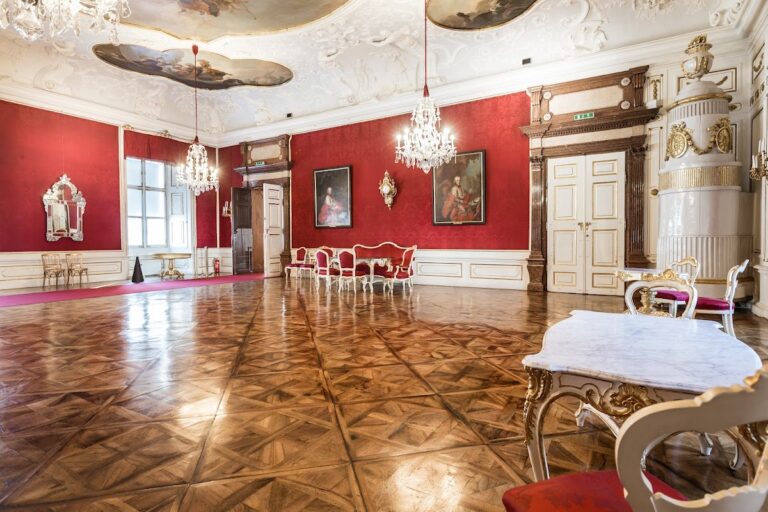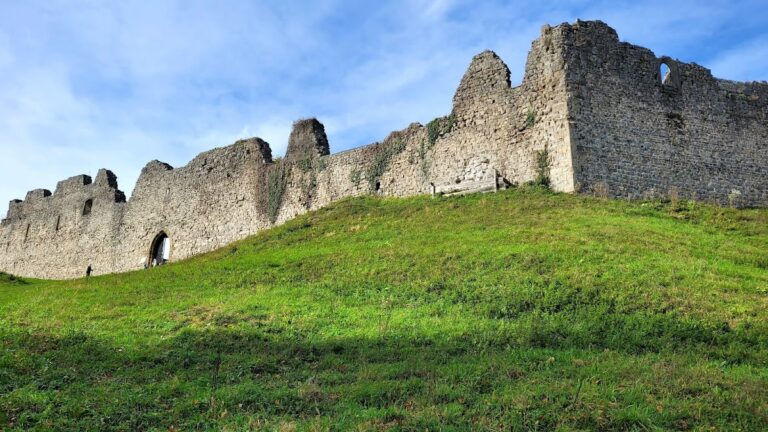Hohensalzburg Castle: A Historic Fortress in Salzburg, Austria
Visitor Information
Google Rating: 4.6
Popularity: Very High
Google Maps: View on Google Maps
Official Website: www.festung-hohensalzburg.at
Country: Austria
Civilization: Medieval European
Remains: Military
History
Hohensalzburg Castle stands on the Festungsberg hill above Salzburg, Austria. Its construction began in 1077 under Archbishop Gebhard, who established a residential tower, a small church, and a surrounding wall. After Gebhard’s exile during the Investiture Controversy, the castle’s initial phase was completed by Archbishops Berthold von Moosburg and Konrad von Abenberg between 1106 and 1147.
Between the 12th and 14th centuries, the castle’s outer defensive ring was completed, defining much of its present form. In 1462, Archbishop Burkhard II von Weißpriach reinforced this ring wall with four towers and strengthened the eastern entrance near Nonnberg Abbey with a thick wall. The southern side received a bastion for added defense.
From 1479, Bernhard von Rohr raised the old ring wall and created the “Schlangengang” or Snake Passage to protect the eastern approach. Johann III Beckenschlager expanded the “Hohen Stock” into a four-story residence and added the first armory and granary during his tenure from 1481 to 1489. His coat of arms remains the oldest visible in the castle.
Archbishop Leonhard von Keutschach, ruling from 1495 to 1519, transformed the castle into a late Gothic princely residence. He extended upper floors, replaced the chapel with a multi-story residential building, and richly decorated the princely rooms. To secure water during sieges, a large cistern was built, and some towers were heightened. The castle’s funicular, known as the Reißzug, along with several gates and the bakery, were constructed during this period or earlier.
The castle’s funding largely came from salt mining near Hallein and in the Tauern mountains, with gold production peaking in 1555. During the 1525 Peasants’ War, peasants and miners besieged the fortress for nearly two months, but it remained unconquered.
In the Thirty Years’ War, Archbishop Paris von Lodron fortified Salzburg and expanded Hohensalzburg into a modern fortress. He added powerful bastions, the first defensive arch called the Lodronbogen, and artillery-resistant structures. Later, Max Gandolf von Kuenburg built the Feuerbastei bastion in 1681, the castle’s last major defensive addition.
By 1790, the armory held a vast collection of weapons and armor, though many were outdated. During the Napoleonic Wars, Salzburg surrendered without fighting, sparing the fortress from destruction. After a fire in 1849, restoration focused on interiors in 1851. The castle served as a depot and barracks until Emperor Franz Joseph I officially decommissioned it in 1861, though military use continued until 1883.
In 1892, a funicular railway was built for tourism, replacing the former residence of composer Michael Haydn. From 1951 to 1981, extensive structural stabilization took place. Since 2016, the State of Salzburg has owned the castle, preserving it as a cultural site.
Remains
Hohensalzburg Castle covers over 7,000 square meters of built area, with bastions extending the total to more than 14,000 square meters. It is one of Europe’s largest fully preserved castles, situated on the Festungsberg hill, which extends northwest into the Mönchsberg. The eastern slope, called Nonnberg, hosts the Benedictine Nonnberg Abbey beneath the castle’s eastern outer fortifications.
The original fortress featured a Romanesque crenellated outer ring wall about 450 meters long. This wall has straight sections and tower-like heights at steep corners, built almost entirely from local dolomite stone. An inner ring wall and a large residential tower known as the “Hohen Stock” completed the early 12th-century defenses.
The “Hohen Stock” was expanded in the late 15th century into a four-story residential building, which included the castle’s first armory and granary. Adjacent to the large ring wall lies the castle chapel, recently excavated. It features large arched windows, stucco decorations, and extensive wall paintings dating to around 1140. These paintings include a marble-like base zone, a frieze of figures, and a crowned window zone decorated with meander bands.
The late Gothic phase introduced artillery towers designed to resist firearms, marking the first such defensive structures in the castle. The princely rooms from this period are richly decorated with stone carvings, woodwork, and tiled stoves, representing significant European Gothic art.
The Krautturm tower houses the “Salzburger Stier,” a large mechanical organ powered by a cylinder. It is considered the oldest functioning organ hornwork worldwide. Defensive bastions such as the Hasengrabenbasteien and Nonnbergbasteien were built in the 17th century, along with the Lodronbogen arch, the barbican called “Katze,” double gates, and a protective artillery wall.
The Feuerbastei, constructed in 1681 on the northern side, stands over 30 meters high with walls several meters thick. It includes a small firing wall with additional casemates. The castle’s interior features a large courtyard with St. George’s Church, multiple gates, and underground passages connecting defensive points.
The Reißzug funicular railway, dating from the late 15th or early 16th century, is the oldest preserved funicular in the world. The castle’s roofs, including those of the armory and granary, were restored in 2019 using historic timber, approximately 80,000 Eternit tiles, and five tons of copper sheeting.
From the castle, panoramic views extend over the Salzburg basin and surrounding mountains, including Hahnsberg, Hochgitzen, and the Tennengebirge range. Some areas, such as the old bakery, wine cellar, Kuenburgbastei, and square bastion, are accessible only during special guided tours. The castle also houses museums, including the Marionette Museum and the Archduke Rainer Infantry Regiment No. 59 Museum. The castle church remains in use for religious ceremonies on select occasions.

